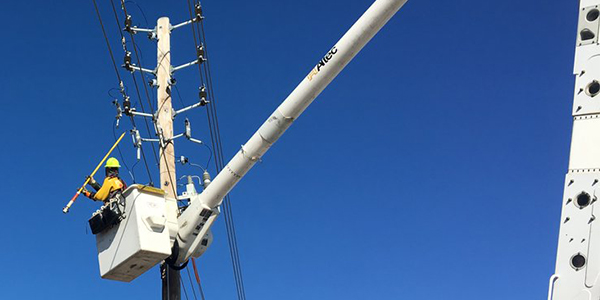CARMEL, Ind. — In the wake of its January grid emergency, MISO has pledged to further study generation cutoffs in extreme temperatures and how it can best account for voluntary load curtailments in load forecasting.
MISO said its Jan. 30-31 emergency was in part triggered by a greater-than-expected drop in wind generation, with emergency demand difficult to predict as schools and businesses closed for the day and millions of energy consumers lowered their thermostats during the event in response to utility requests. (See MISO Details ‘Uncertainty’ Behind Winter Max Gen Event.)
MISO said temperatures in its North region were more than 6 degrees Fahrenheit below those during the 2014 polar vortex. Forced outages surpassed 20 GW, while total outages and derates took more than 35 GW of generation offline. Although the RTO didn’t call on its neighbors for imports, its higher emergency prices attracted more than 5 GW of imports. Over the two days, the RTO exceeded $18 million in uplift charges, on par with other severe cold snaps. Load-modifying resource (LMR) use peaked at almost 3.9 GW on Jan. 30.
“Basically, it was unprecedently cold in MISO,” Director of Central Region Operations Ron Arness said during a Reliability Subcommittee meeting Wednesday. “Temperatures were colder than any since the existence of MISO, and we suspect that’s why wind generation was cutting off. … Even though the temperatures are abnormal, we should have this cutoff information so we can make good assessments about what generation is forecasted for the next day.”
Arness said MISO will gather operating parameters to determine what generating resources must switch off in response to temperature thresholds and establish a load forecast variable that includes known voluntary load curtailment.
He added that quantifying voluntary curtailment is “a difficult thing to do, but one that MISO will look at nevertheless.”
Grid Strategies’ Michael Goggin, representing the American Wind Energy Association, said that while there were cold-weather wind cutoffs, large amounts of imported wind from PJM into MISO helped alleviate the emergency. He also said wind generation in Michigan helped to cover Consumers Energy’s gas supply issues following a fire at a compressor station.
Goggin also said it “makes perfect sense” for MISO to keep an account of the operating cutoffs across all classes of generation.
“I think once they do that, they won’t have an issue,” Goggin said in a telephone interview with RTO Insider.
He added that significant outages across all MISO resource types on Jan. 30 were a “much larger factor” than the missed wind forecast.
“There’s just a lot of equipment failures across all resources when you have temperatures this extreme,” he said.
As with past emergencies, some LMRs did not respond or verify availability in MISO’s communication system, Arness said. The RTO will hold training for LMR owners on how to navigate its system April 23-24 and again May 21-22 in anticipation of its summer peak.
As expected, MISO’s January operations report reflected the extreme cold and emergency declaration on the last two days of the month. The RTO’s peak load of 101 GW occurred on Jan. 30.
MISO also hit a new record wind output peak of 16.3 GW on Jan. 8, besting the previous record of 15.6 GW from March 31, 2018.
MISO to Work Through 2-Hour LMR Notification
MISO plans to work with stakeholders to determine how it will provide two-hour notice to LMRs called up to respond to emergency conditions.
FERC last month accepted MISO’s stricter LMR rules with a caveat that the RTO revise its pledge to give a two-hour notice to resources prior to calling or canceling emergency action. The commission told the RTO to clarify language so it either calls or cancels an emergency declaration at least two hours ahead of the start of the actual emergency. MISO had promised the two-hour notice prior to the start of scheduling instructions to LMRs, which FERC said contradicted other language in the proposal that referenced the start of emergency conditions, not scheduling instructions. (See MISO LMR Capacity Rules Get FERC Approval.)
Customized Energy Solutions’ Ted Kuhn asked how long LMRs are on the hook under the two-hour warning should MISO need to shift the emergency declaration to a later time.
“You just need to make sure it’s clear how long they have to be available. It’s not an indefinite; it needs to be [a fixed time period],” Kuhn said.
MISO staff said it was extremely unlikely that the RTO would continuously delay an emergency declaration over several hours, but it may need a little flexibility as it monitors possible maximum generation events.
“The timing of the peak is not a fixed thing. It could come earlier; it could come later,” said Dustin Grethen, MISO market design adviser.
“The two-hour notification is just that: making sure if they have someone drive out to flip the switch, they’re driving at the right time,” MISO Director of Resource Adequacy Coordination Laura Rauch said.
The RTO will discuss the filing amendment with stakeholders during this month’s Resource Adequacy Subcommittee meeting.
— Amanda Durish Cook



